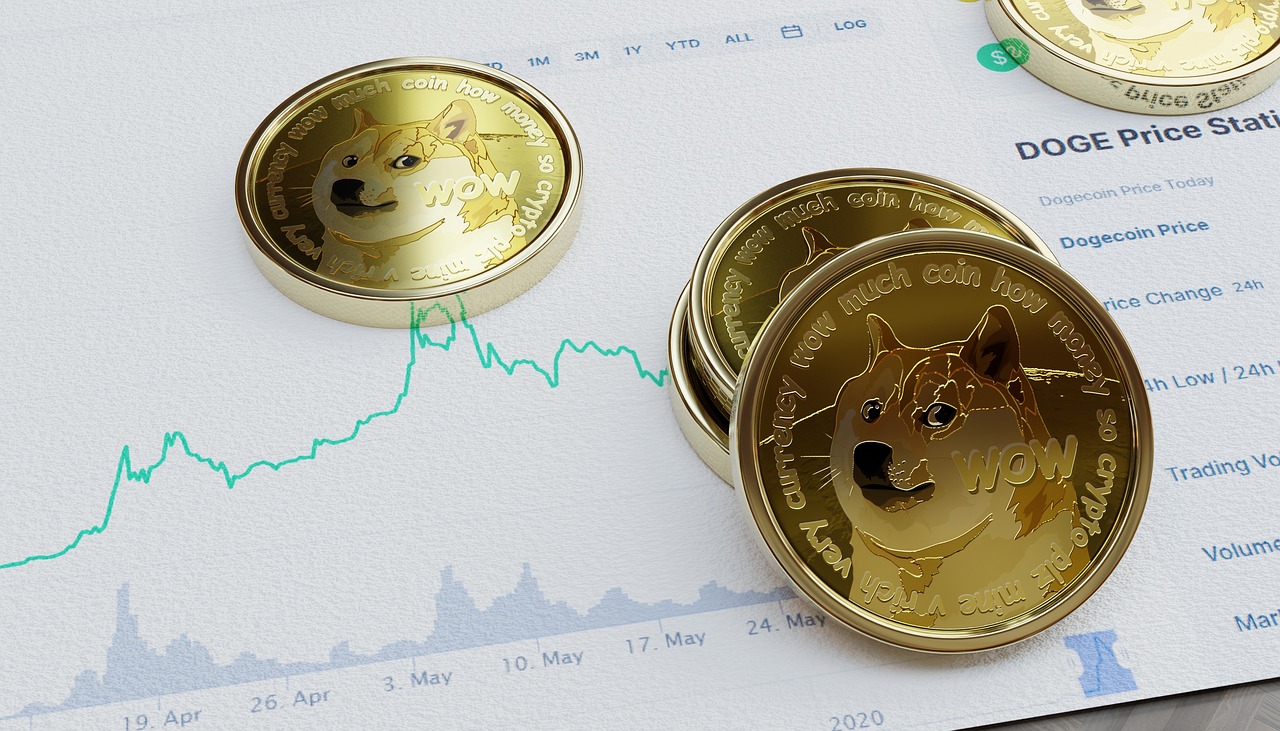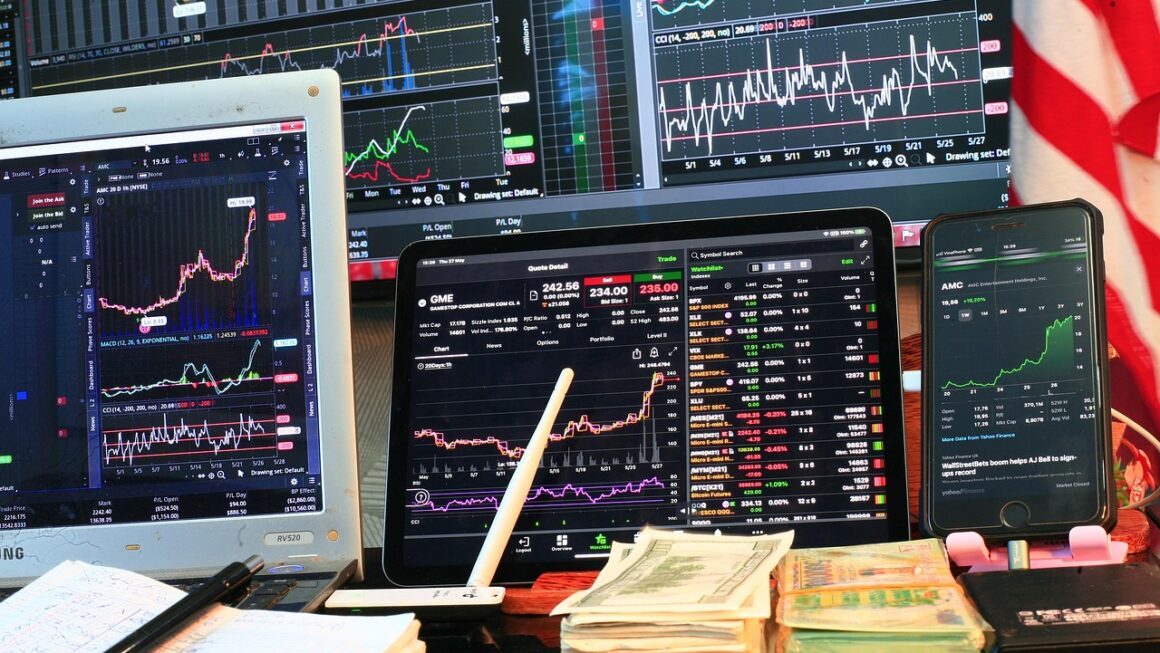Crypto futures. The words themselves can sound a bit intimidating, but understanding them is crucial for anyone looking to navigate the ever-evolving world of cryptocurrency trading. They offer both opportunities for profit and significant risks. This article provides a deep dive into crypto futures, exploring what they are, how they work, their benefits and risks, and how to trade them responsibly. Whether you’re a seasoned trader or just starting out, this guide will equip you with the knowledge you need to make informed decisions.
What are Crypto Futures?
Defining Crypto Futures Contracts
A crypto futures contract is an agreement to buy or sell a specific cryptocurrency at a predetermined price on a specified future date. Unlike buying the cryptocurrency outright, futures allow you to speculate on its price movement without actually owning the underlying asset. You’re essentially entering a contract based on your expectation of whether the price will rise (going “long”) or fall (going “short”).
- Example: Imagine you believe Bitcoin (BTC) will increase in value over the next month. You can buy a BTC futures contract that obligates you to buy BTC at a specific price a month from now. If the price of BTC rises above that predetermined price, you profit. Conversely, if it falls, you incur a loss.
Key Components of a Crypto Futures Contract
Understanding the key components of a futures contract is essential before diving into trading. These components include:
- Underlying Asset: The cryptocurrency being traded (e.g., Bitcoin, Ethereum).
- Contract Size: The amount of the underlying asset represented by one contract (e.g., 1 BTC, 5 ETH).
- Expiration Date: The date on which the contract expires and must be settled.
- Settlement Price: The price used to settle the contract at expiration.
- Margin: The amount of capital required to open and maintain a futures position.
Perpetual Futures vs. Standard Futures
There are two main types of crypto futures:
- Standard Futures: These have a specific expiration date. Upon expiry, the contract is settled, and profits or losses are realized.
- Perpetual Futures: These don’t have an expiration date. Instead, they use a funding rate mechanism to keep the contract price close to the underlying asset’s spot price. Funding rates are periodic payments between long and short positions based on the difference between the futures price and the spot price.
How Crypto Futures Trading Works
Leverage and Margin Explained
Leverage is a core element of futures trading. It allows you to control a large position with a relatively small amount of capital. Margin is the initial deposit required to open a leveraged position. While leverage can amplify profits, it also magnifies losses.
- Example: With 10x leverage, a $1,000 margin can control a $10,000 position in a Bitcoin futures contract. If Bitcoin’s price increases by 10%, your profit would be $1,000 (before fees), effectively doubling your initial margin. However, a 10% decrease would also result in a $1,000 loss, wiping out your margin.
Going Long vs. Going Short
Futures trading allows you to profit from both rising and falling markets.
- Going Long: This involves buying a futures contract, betting that the price of the underlying cryptocurrency will increase.
- Going Short: This involves selling a futures contract, betting that the price of the underlying cryptocurrency will decrease.
Understanding Funding Rates (Perpetual Futures)
In perpetual futures contracts, funding rates play a crucial role in maintaining price stability. The funding rate is a periodic payment exchanged between buyers (longs) and sellers (shorts) of the contract. The direction and size of the funding rate incentivize traders to keep the futures price aligned with the spot price.
- If the futures price is trading above the spot price, the funding rate will be positive, and longs will pay shorts. This incentivizes traders to short the futures contract, bringing the price down.
- If the futures price is trading below the spot price, the funding rate will be negative, and shorts will pay longs. This incentivizes traders to long the futures contract, bringing the price up.
Liquidation and Margin Calls
A margin call occurs when your account equity falls below the required maintenance margin. The exchange will then notify you to deposit additional funds to cover potential losses. If you fail to meet the margin call, your position may be liquidated, meaning it’s automatically closed to prevent further losses. This is a significant risk associated with leveraged trading.
- Tip: To avoid liquidation, carefully monitor your margin levels and use stop-loss orders to limit potential losses.
Benefits and Risks of Trading Crypto Futures
Benefits
- Leverage: The ability to control a large position with a small amount of capital, potentially amplifying profits.
- Hedging: Futures can be used to protect against potential losses in your existing cryptocurrency holdings. For example, if you own Bitcoin and are concerned about a price drop, you can short Bitcoin futures to offset potential losses.
- Profit in Both Directions: Futures allow you to profit from both rising (going long) and falling (going short) markets.
- Price Discovery: Futures markets can provide valuable insights into the market’s expectations for future cryptocurrency prices.
- Liquidity: Major cryptocurrency futures exchanges offer high liquidity, allowing you to easily enter and exit positions.
Risks
- High Volatility: Cryptocurrencies are inherently volatile, and futures trading amplifies this volatility due to leverage.
- Liquidation: As mentioned above, failing to maintain sufficient margin can lead to liquidation, resulting in significant losses.
- Complexity: Futures trading is more complex than simply buying and holding cryptocurrency. It requires a good understanding of market dynamics, risk management, and trading strategies.
- Funding Rates: While they help stabilize prices, funding rates can be an unexpected cost, especially for perpetual futures contracts.
- Emotional Trading: The high leverage and fast-paced nature of futures trading can lead to emotional decision-making, resulting in poor trading choices.
Strategies for Trading Crypto Futures
Developing a Trading Plan
Before you start trading crypto futures, it’s crucial to develop a well-defined trading plan. This plan should include:
- Risk Tolerance: Determine how much capital you’re willing to risk on each trade. A common guideline is to risk no more than 1-2% of your total capital per trade.
- Trading Goals: Define your objectives, such as generating income, growing your capital, or hedging against risk.
- Trading Style: Choose a trading style that suits your personality and time commitment. Common styles include day trading, swing trading, and position trading.
- Market Analysis: Decide which methods you’ll use to analyze the market, such as technical analysis (chart patterns, indicators) or fundamental analysis (news, market trends).
Risk Management Techniques
Effective risk management is paramount in futures trading. Here are some essential techniques:
- Stop-Loss Orders: Place stop-loss orders to automatically close your position if the price moves against you, limiting potential losses.
- Take-Profit Orders: Set take-profit orders to automatically close your position when your target profit is reached.
- Position Sizing: Carefully determine the size of your positions based on your risk tolerance and account size.
- Diversification: Don’t put all your capital into a single trade. Diversify your portfolio across different cryptocurrencies and trading strategies.
- Avoid Overleveraging: While leverage can amplify profits, it also magnifies losses. Use leverage responsibly and avoid taking on excessive risk.
Common Trading Strategies
Several common trading strategies can be applied to crypto futures:
- Trend Following: Identify and trade in the direction of the prevailing trend.
- Range Trading: Identify and trade within a defined price range.
- Breakout Trading: Trade when the price breaks through a significant support or resistance level.
- Scalping: Make small profits from minor price fluctuations.
- Arbitrage: Exploit price differences between different exchanges.
Choosing a Crypto Futures Exchange
Key Factors to Consider
Selecting the right crypto futures exchange is crucial for a successful trading experience. Consider these factors:
- Security: Choose an exchange with a strong security track record and robust measures to protect your funds.
- Liquidity: Ensure the exchange has sufficient liquidity to allow you to easily enter and exit positions at your desired prices.
- Fees: Compare the trading fees charged by different exchanges. Lower fees can significantly impact your profitability.
- Leverage Options: Check the available leverage options and choose an exchange that offers the level of leverage you need.
- User Interface: Select an exchange with a user-friendly interface that is easy to navigate and understand.
- Customer Support: Ensure the exchange offers responsive and helpful customer support.
- Regulatory Compliance: Choose an exchange that complies with relevant regulations in your jurisdiction.
Popular Crypto Futures Exchanges
- Binance Futures
- Bybit
- OKX
- Deribit (Primarily focused on options but offers futures too)
Always do your own research before choosing an exchange.
Conclusion
Crypto futures offer a dynamic way to participate in the cryptocurrency market, providing opportunities for both profit and hedging. However, they also come with significant risks, particularly due to the use of leverage and the inherent volatility of cryptocurrencies. Before venturing into crypto futures trading, it’s essential to thoroughly understand the concepts, develop a solid trading plan, practice effective risk management, and choose a reputable exchange. Continuous learning and adaptation are key to success in this complex and rapidly evolving market. Remember to always trade responsibly and only invest what you can afford to lose.




